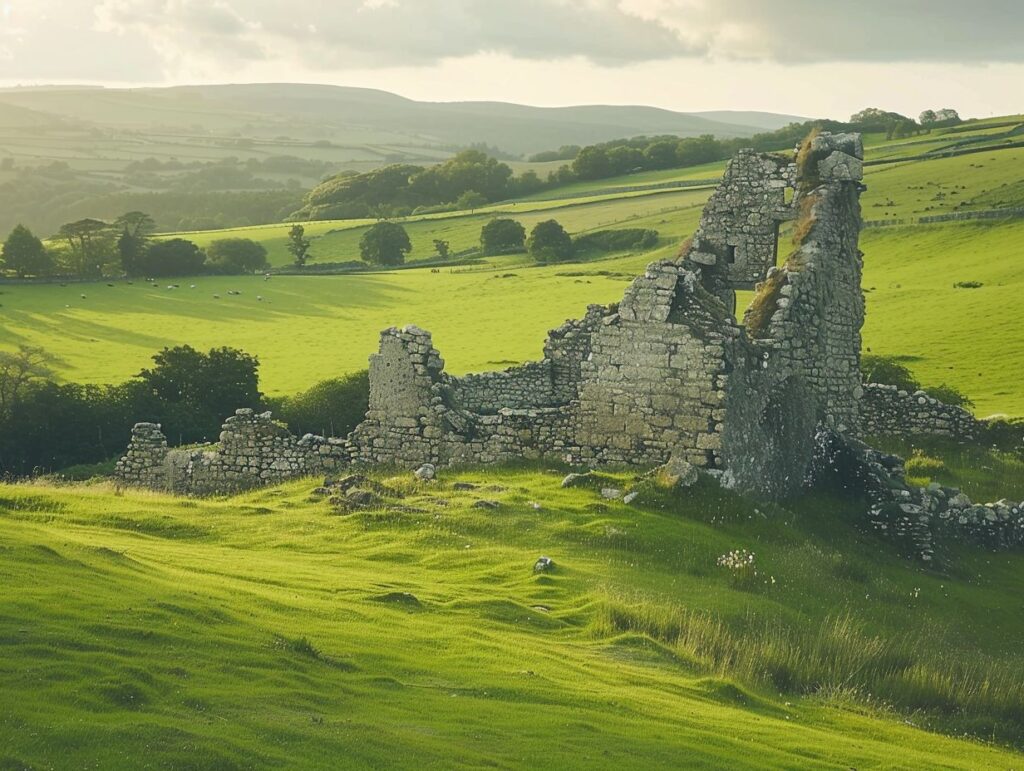Are you a history buff looking to add a unique twist to your next hiking adventure?
Exploring historical sites along your hike not only allows you to immerse yourself in the culture and history of the area but also adds an element of adventure to your journey.
From the iconic Hadrian’s Wall to the mystical Stonehenge, the UK is home to a plethora of historical sites waiting to be discovered.
In this article, we’ll explore the top historical sites to visit on your UK hike and provide you with tips on how to plan your trip for an unforgettable experience.
Key Takeaways:
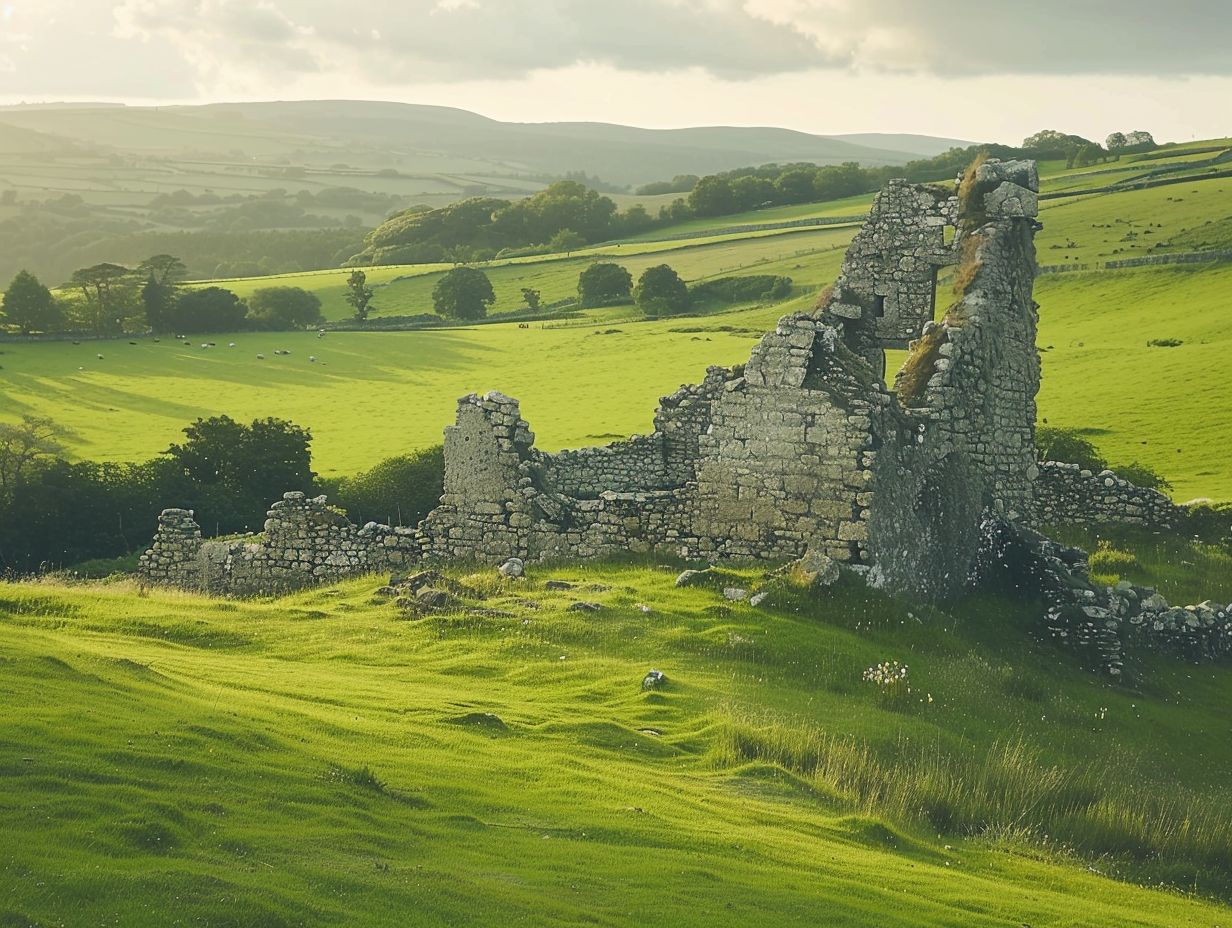
- Hiking through UK’s historical sites adds cultural and historical depth to your trip.
- Explore unique architectural and natural features like Hadrian’s Wall and the White Cliffs of Dover on your hike.
- Proper research, gear, and even a guide can enhance your hiking trip and experience of these ancient sites.
Top Historical Sites to Visit on Your UK Hike
The United Kingdom boasts a plethora of historical sites that serve as captivating hiking destinations. Examples include the renowned Hadrian’s Wall, the enigmatic Stonehenge, and the legendary Tintagel Castle, each providing a distinctive insight into bygone eras.
1. Hadrian’s Wall
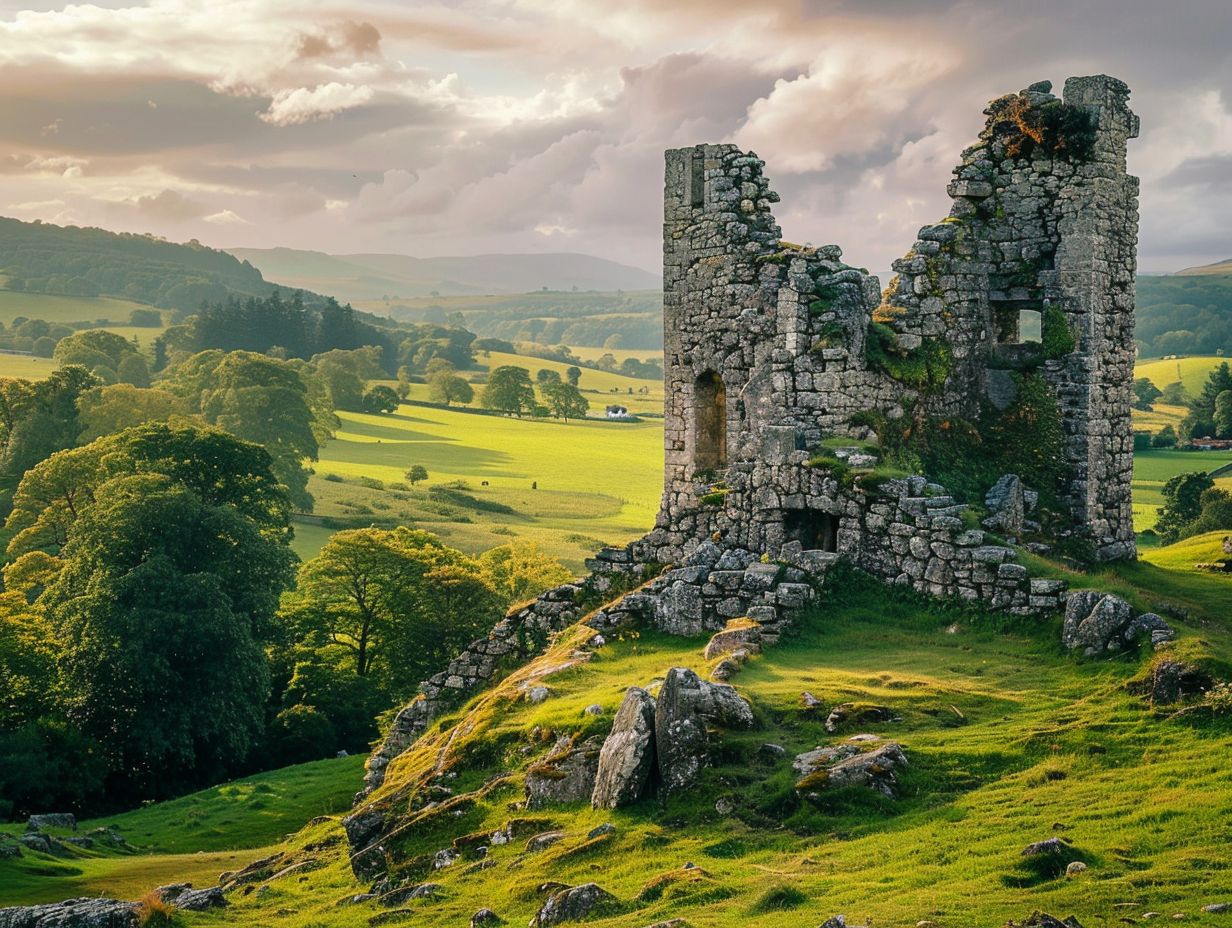
Hadrian’s Wall is renowned as one of the most notable Roman ruins in England, spanning the northern border and providing picturesque trails like the Sycamore Gap Walk.
Constructed under the rule of Emperor Hadrian in the 2nd century AD, this ancient wall functioned as a defensive fortification delineating the northern extent of the Roman Empire. Its historical significance is underscored by its capacity to illustrate the strength and architectural prowess of the Roman Empire.
The Sycamore Gap Walk, a well-frequented trail adjacent to Hadrian’s Wall, affords hikers a window into the scenic landscapes of Northumberland National Park, featuring expansive vistas of the rugged terrain and iconic segments of the wall itself.
2. Stonehenge
Stonehenge, an iconic ancient site, provides visitors with a unique opportunity to explore prehistoric England, whilst the neighbouring Durrington Walls offer additional insights into the historical context of the area.
Dating back over 4,500 years, the construction of Stonehenge remains a subject of intrigue and discussion among archaeologists and historians due to its purpose and construction methods. This remarkable stone circle is believed to have been erected in multiple stages, serving as a testament to the advancing architectural capabilities of its creators.
Durrington Walls, situated in close proximity to Stonehenge, once served as a vast Neolithic settlement that likely accommodated the individuals involved in the construction of Stonehenge. The correlation between these two sites shines a light on the social and cultural complexities of ancient societies within the region.
3. Tintagel Castle.
Tintagel Castle, situated along the rugged coast of Cornwall, is rich in the legend of King Arthur and offers striking coastal vistas and historical fascination. The imposing cliffs that encircle Tintagel Castle contribute an element of enigma to this renowned location, heightening its mythological charm.
Guests have the opportunity to investigate the remains of the medieval castle, envisioning the grandeur and theatricality of its history. Positioned majestically on the rough promontory, the castle remnants overlook expansive views of the tumultuous waves below.
As individuals meander through the ancient passageways and courtyards, whispers of the past appear to drift in the breeze, transporting visitors to a bygone epoch.
4. The Roman Baths
The Roman Baths in Bath, England, present a meticulously preserved portrayal of Roman engineering and social customs, offering a glimpse into ancient structures and artefacts of that era.
Erected around 70 AD, the Roman Baths served as a crucial social centre for the inhabitants of Aquae Sulis. The elaborate arrangement of baths, temples, and courtyards underscored the sophistication of Roman architectural design.
Visitors have the opportunity to admire the magnificent Great Bath, the focal point of the complex where individuals congregated for bathing and social interactions.
Artefacts such as intricate mosaics, coins, and sculptures present a captivating perspective on daily life during the Roman period. Through diligent preservation endeavours spanning centuries, guests are afforded the opportunity to immerse themselves in the rich history of this ancient civilisation.
5. The White Cliffs of Dover
The White Cliffs of Dover are esteemed for their remarkable natural beauty and historical significance, embodying England’s enduring strength and strategic value across various historical epochs. Their lofty chalk formations represent not only a picturesque spectacle but also an emblem of sanctuary and reassurance for mariners and military personnel returning to British shores.
These iconic cliffs have played a vital role as a guiding light during periods of conflict, notably serving as a critical navigational reference point for Allied troops during the tumult of World War II.
Renowned for their captivating allure and profound legacy, the White Cliffs of Dover have been immortalised in literary works and artistic expressions, resonating with audiences globally through their evocative charm and profound historical resonance.
6. The Giant’s Causeway
The Giant’s Causeway, renowned for its distinctive basalt columns, stands as a remarkable natural wonder intertwined with centuries-old legends and historical significance, offering an intriguing hiking experience.
These hexagonal rock formations, crafted through ancient volcanic processes, contribute to the unique character of the Causeway. According to Irish folklore, the creation of the Causeway is attributed to the giant Finn McCool, who fashioned it as a challenge to a Scottish giant.
Present-day visitors can traverse the rugged coastal cliffs and admire the intricate interlocking columns that exude an almost ethereal quality.
The region boasts a diverse array of plant and animal life, presenting an idyllic setting for enthusiasts of nature. Extensive hiking trails navigate the terrain, affording awe-inspiring vistas of the Atlantic Ocean and the encircling cliffs.
7. The Tower of London
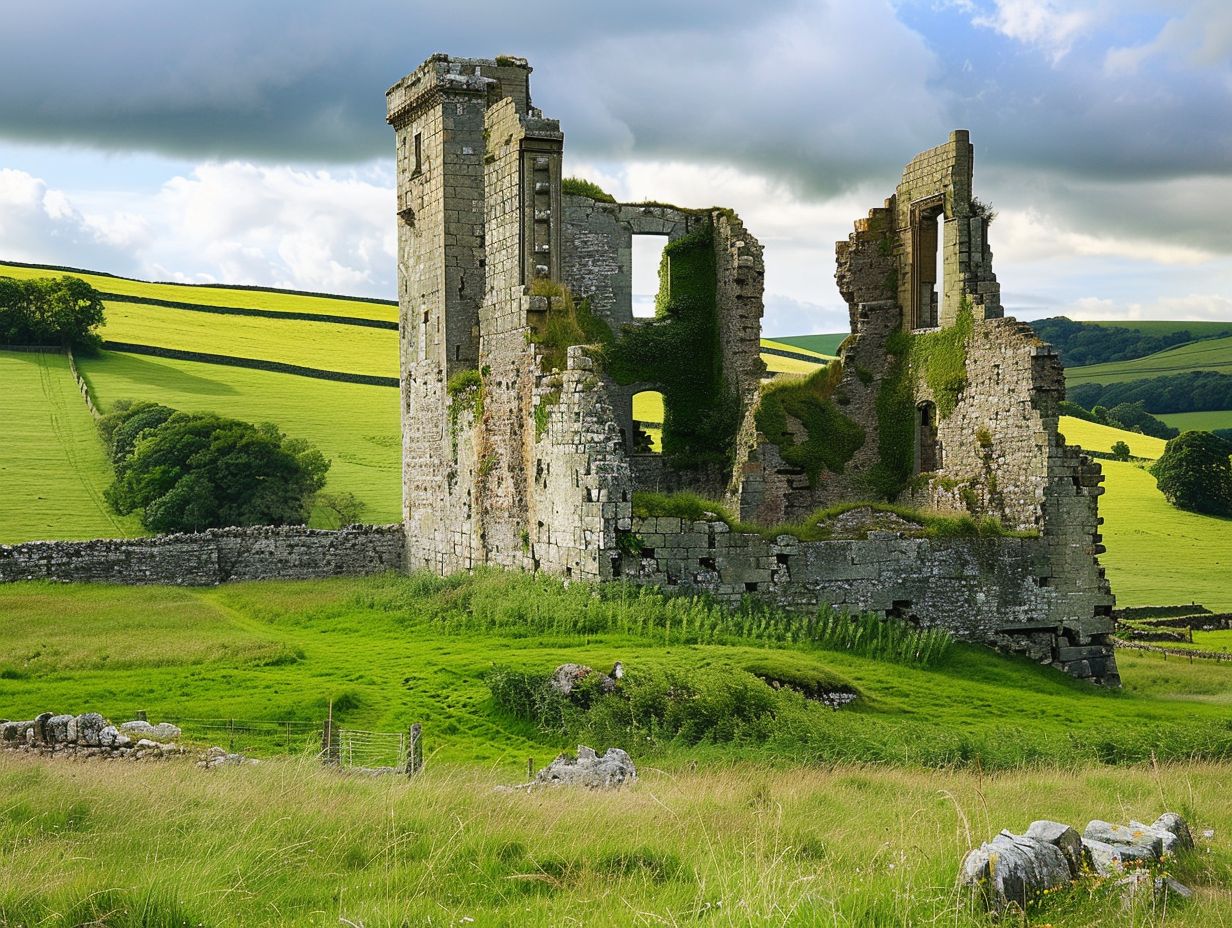
Situated along the banks of the River Thames, the Tower of London stands as a historic landmark with a rich heritage, having fulfilled roles as a royal palace, prison, and treasury, thus attracting individuals with a keen interest in history.
Its establishment traces back to the Norman Conquest of England in the 11th century, during which William the Conqueror mandated its construction.
Throughout the annals of time, the Tower has borne witness to significant occurrences, including the detainment of Anne Boleyn, the execution of Lady Jane Grey, and the safekeeping of the Crown Jewels.
Within the Tower’s distinguished White Tower can be found an assortment of arms and armor, while the Ravens of the Tower hold a superstitious connotation linked to its enduring status as a bastion and emblem of regal authority.
8. Edinburgh Castle
Edinburgh Castle, situated atop Castle Rock, provides sweeping views of Scotland’s capital and an immersive exploration of the nation’s illustrious history.
The strategic significance of Edinburgh Castle traces back to ancient eras, functioning as a crucial fortress in numerous historical conflicts. Throughout its existence, the castle has borne witness to pivotal moments such as the Wars of Scottish Independence and the Jacobite Risings.
Characterised by its formidable walls, towers, and the iconic Crown Square, the architectural elements of Edinburgh Castle stand as a testament to its profound historical legacy. Its picturesque setting overlooking the city and the breathtaking landscapes beyond further enhance its appeal as a premier tourist attraction in Scotland.
9. The Isle of Skye
The Isle of Skye, renowned for its dramatic landscapes and significant historical heritage, provides an exquisite amalgamation of natural splendour and ancient landmarks, rendering it an eminent destination for engaging in historical treks.
As one traverses the intricate network of trails woven across the island, an immersive experience unfolds, characterised by a panorama of geological marvels, ranging from the majestic Cuillin Mountains to the iconic Old Man of Storr rock formation.
The exploration of the Trotternish Ridge leads to encounters with the Quiraing, showcasing remarkable cliffs and distinct rock formations sculpted by ancient landslides.
By paying a visit to historical sites such as Dunvegan Castle and the ancient ruins of Duntulm Castle, visitors are afforded a glimpse into the captivating past of the island.
The crystalline Fairy Pools and the enchanting Fairy Glen further enhance Skye’s mystical charm, culminating in an unforgettable and enriching experience for aficionados of natural landscapes and history enthusiasts alike.
10. The Ring of Brodgar
The Ring of Brodgar, recognised as one of the largest stone circles in the UK, offers a unique insight into Neolithic Britain and serves as a captivating attraction for individuals with a keen interest in history.
Constructed between 2500-2000 BC, this ancient stone circle, comprising 27 standing stones, initially occupied a central position within a ritual landscape on the Orkney Islands.
Despite extensive research and excavation, the specific purpose of the Ring of Brodgar remains enigmatic, with prevailing theories proposing its utilisation as a ceremonial location, a marker for astronomical occurrences, or a venue for communal gatherings.
The sheer scale of the structure and its alignment with the surrounding terrain underscore the advanced architectural and astronomical expertise possessed by the ancient builders.
How to Plan Your Hiking Trip to Include Historical Sites
The organisation of a hiking excursion that encompasses historical landmarks necessitates thorough research, meticulous preparation, and occasionally the assistance of specialised agencies such as Absolute Escapes to guarantee a well-coordinated and culturally enriching experience.
1. Research the Historical Sites Along Your Hiking Route
Conducting thorough research on the historical sites located along the hiking route is imperative to avoid overlooking any significant landmarks or hidden gems.
Ahead of embarking on the journey, it is advisable to refer to reputable sources such as travel guides, online forums, and local authorities to acquire comprehensive information regarding the historical background and importance of the sites that will be encountered.
Examine maps and trail descriptions attentively to acquaint yourself with the topography and identify crucial points of interest.
Contemplate the possibility of joining organized tours or engaging the services of a proficient guide to enhance your exploration with detailed insights and narratives pertaining to the historical sites you are set to discover.
2. Make Sure to Pack Proper Hiking Gear
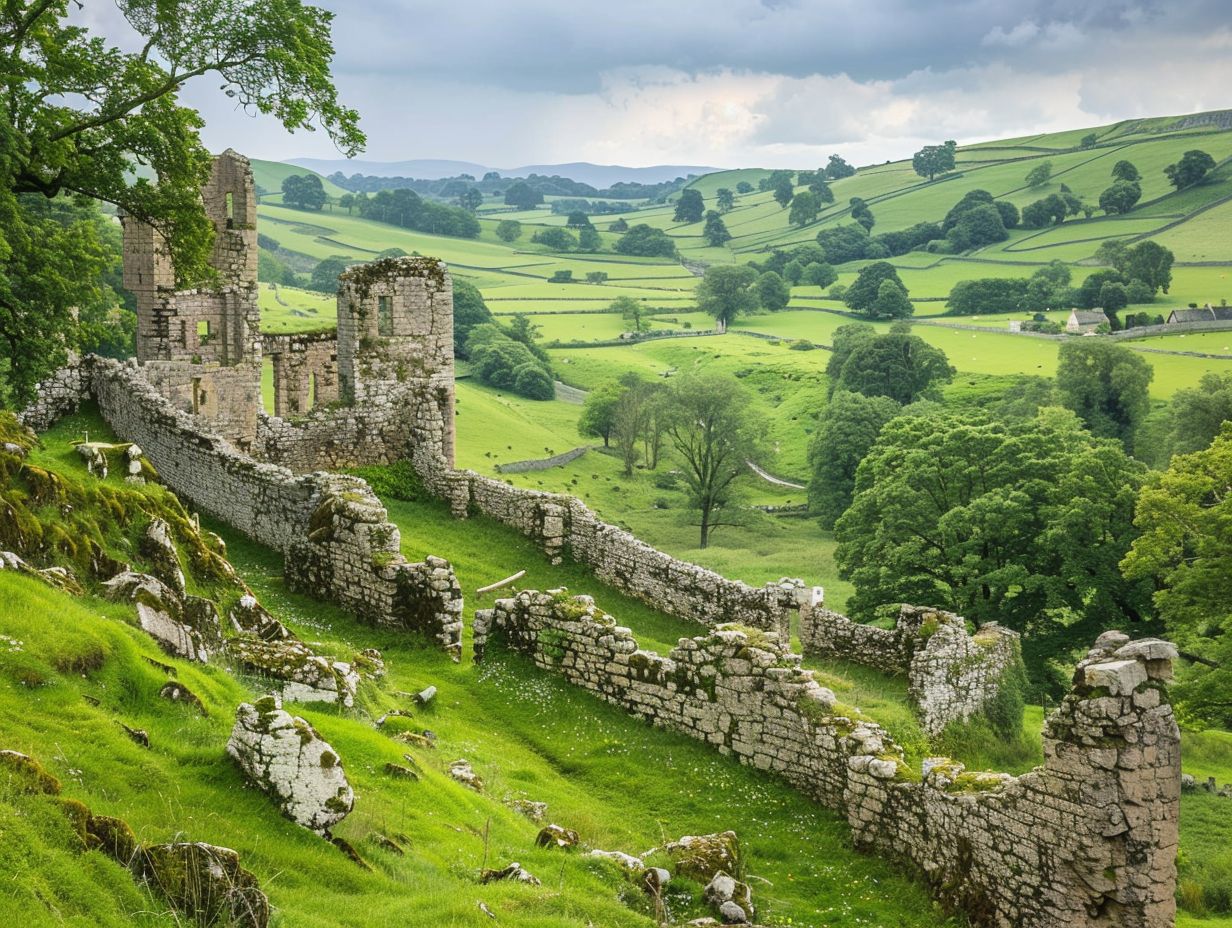
Ensuring proper preparation for a successful hiking trip is paramount, particularly in the context of exploring historical sites across varied terrains and weather conditions.
The utilisation of high-quality hiking boots is essential as they offer ankle support and traction on uneven surfaces, aiding in the prevention of potential injuries. Additionally, the inclusion of moisture-wicking socks can assist in the prevention of blisters, thereby enhancing overall comfort during the expedition.
Selecting lightweight and breathable clothing options is advisable as they provide both comfort and protection from diverse weather elements, thus contributing to a more conducive hiking experience.
Furthermore, the inclusion of navigational aids such as maps, compasses, or GPS devices is highly recommended, especially in instances where remote historical sites are being explored. Enhanced navigational competence facilitates a smoother and more organised exploration process.
Equipping oneself with a sturdy backpack is imperative for the storage and transportation of essential items such as water, snacks, first aid supplies, and other necessities during extended hikes.
Overlooking the importance of items like sunscreen, insect repellent, and a torch may compromise safety and comfort during the hiking excursion, thus it is crucial to include them in the preparation checklist.
3. Consider Hiring a Guide for a More In-Depth Experience
Engaging the services of a guide can enhance the depth of your experience, providing expert insights and narratives about the historical sites you encounter, thereby enriching your hiking excursion.
Guides possess the expertise to animate these historical sites through their extensive knowledge, allowing you to comprehend the importance of each location in a manner that self-guided tours often fail to achieve.
They have the ability to tailor the experience according to your specific interests and physical condition, ensuring optimal value from your hiking expedition. Furthermore, with a guide accompanying you, you can gain insights into the local flora and fauna, thereby incorporating an additional layer of richness to your outdoor adventure.
Frequently Asked Questions
What are some historical sites that can be visited on UK hikes?
There are countless historical sites that can be found along hiking routes in the UK. Some popular options include Stonehenge, Hadrian’s Wall, and Tintagel Castle.
Are there any specific hiking trails that pass by historical sites?
Yes, there are several hiking trails that have been specifically designed to include historical sites. The Cotswold Way, the South West Coast Path, and the West Highland Way are just a few examples.
Do I need to pay entrance fees to visit these historical sites on my hike?
In most cases, yes, there will be an entrance fee for visiting historical sites on your UK hike. However, some sites may offer discounts or free entry for hikers, so it’s worth checking beforehand.
Are these historical sites suitable for all ages and fitness levels?
It depends on the specific site and its accessibility. Some sites may have steep or uneven terrain that may not be suitable for young children or those with mobility issues. It’s always best to research the site beforehand.
Is it necessary to book in advance to visit these historical sites on a hike?
It’s not always necessary to book in advance, but it’s recommended for popular sites to avoid disappointment. Some sites may also have limited capacity and require advanced booking.
Can I bring my dog with me to visit these historical sites on a hike?
Dogs are allowed in most outdoor areas and hiking trails in the UK, but they may not be permitted in certain historical sites. It’s best to check the rules and regulations of each site before bringing your dog along.

